Summer is here: Get ready for festivals, fireworks, and fun!
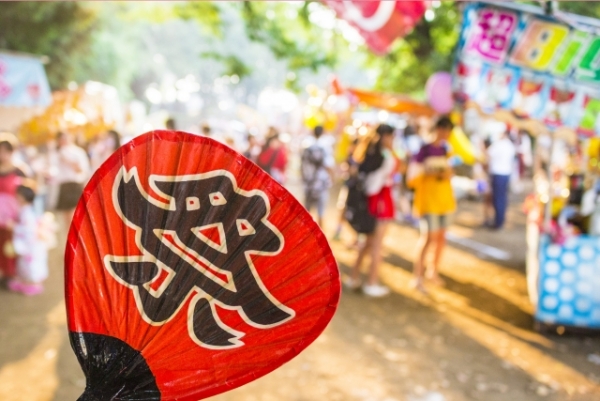
Summer in Japan is an underrated season. Some foreign tourists might avoid visiting Japan during this season because of the hot and humid weather, opting instead for a beach holiday. However, if you bear with the daytime heat, you will be rewarded with so much fun, as summer in Japan is also the season of exciting festivals and dazzling fireworks displays!
Japan has many festivals all year round, but summer has some of the most vibrant and energetic ones. In particular, the north-eastern region of Tohoku (東北地方 Tо̄hoku chihо̄) is especially known for its summer festivals, while Eastern Japan has a plethora of magical fireworks festivals, something I wish I had discovered sooner.

Uchiwa are an essential item for summer festivals. (Image credit: photoAC)
Summer festivals are usually held in the evenings or at night, when temperatures are cooler than during the daytime. Most festivals have a wonderful atmosphere with street food and game stalls, making for a fun and enjoyable evening. Shaved ice (かき氷 kakigо̄ri) and ice-cold beer are sold almost everywhere, and you’ll often see people decked out in colourful cotton yukata (浴衣), which are light and airy, and help to beat the heat. Armed with an uchiwa (うちわ handheld fan)—an essential summer festival item—you won’t have to worry about the heat anymore.

Map of festivals mentioned in this article. (Image credit: JR East / Carissa Loh)
Want to know more about what to expect at a Japanese festival? Matsu-read on to find out more about the best summer festivals (夏祭り natsu matsuri) and fireworks festivals (花火大会 hanabi taikai) that Eastern Japan has to offer:
Aomori Prefecture
Nebuta and neputa festivals

An award-winning nebuta float. (Image credit: 青森県観光連盟)
Starting off in Aomori Prefecture, the northernmost prefecture on mainland Japan, we have the famous nebuta festivals. Held in Aomori City from 2–7 August every year, the Aomori Nebuta Festival (青森ねぶた祭り) is one of the biggest summer festivals in Japan, and awes visitors with its giant, intricately-made floats (ねぶた nebuta), which often depict historical or mythical figures and creatures.
While the festival’s true origins remain a mystery, it is believed that Chinese Qixi traditions blended with local customs of making lanterns with paper and bamboo, which over the years grew in shape and size to eventually become the large nebuta floats of today. These floats are like giant lanterns illuminated from within, and the detailed images almost seem to pop out!
The float parades are usually accompanied by energetic haneto (ハネト) dancers, who jump to the beat of the taiko drums and chant “Rassera, rassera! Rasse, rasse, rassera!” enthusiastically. Equipped with uchiwa and bells, haneto dancers bring lots of energy and vibrance to the festival.

Some of Aomori Prefecture’s more well-known nebuta and neputa Festivals. (Image credit: 青森県観光連盟)
The Aomori Nebuta Festival may be the grandest and most well-known of all the nebuta festivals, but did you know that there are over 40 nebuta festivals in the entire prefecture? While the Aomori Nebuta Festival features 3D floats, the Hirosaki Neputa Festival (1–7 August) features fan-shaped floats, and the Goshogawara Tachineputa Festival (4–8 August) features towering floats up to seven storeys high. Each city has their own way of celebrating their nebuta festivals, and you can read this article for a more in-depth look at the Aomori Nebuta Festival and some of Aomori Prefecture’s other nebuta festivals.
Aomori Nebuta Fireworks
Fireworks are set off while the winning floats are paraded around the bay on boats. (Image credit: 青森県観光連盟)
Another highlight of the Aomori Nebuta Festival is the fireworks display that happens on the final night. Floats which have won prizes in that year’s festival are put on boats and paraded around Aomori Bay, as a magnificent fireworks display lights up the night sky for a grand finale to this stunning festival. With 11,000 fireworks set off over the bay, this fireworks display is one of the largest in Aomori Prefecture, so it’s no surprise that some spectators even come in the early afternoon to start reserving space to sit around the bay area.
Akita Prefecture
Akita Kanto Festival
The Akita Kanto Festival . (Image credit: 秋田県観光連盟)
Of all the natsu matsuri I’ve been too, the Akita Kanto Festival (秋田竿燈祭り) has always been one of my personal favourites since I first experienced it 10 years ago. Held in summer from 3–6 August in Akita Prefecture’s capital city of Akita (秋田市 Akita-shi), the Akita Kanto Festival traditionally prays for a bountiful harvest, where the kantо (竿燈 kantо̄, bamboo poles attached with lanterns) resemble ears of rice plants waving in the air and scaring away bad spirits.

Performers balance kanto on different parts of their body. (Image credit: JR East / Carissa Loh)
Not just a festival, the Akita Kanto Festival is also a performance, and the kanto balancing acts are works of art. It is truly awe-inspiring to watch the performers, especially when thinking about how long they must have practiced to hone their skills and strength.
Clockwise from top left: the four main ways to balance kanto: forehead, shoulder, hip, one-hand. (Image credit: JR East / Carissa Loh)
With music from flutes and drums in the background, and chants of “Dokkoisho, dokkoisho!” resonating in the air, you can marvel at the highly-skilled performers deftly balancing the kanto on various parts of their bodies—the main four being the palm, the forehead, the shoulder, and the hip. It is said that the hip is the hardest of the lot, but the performers made it look easy!
You can read this article for a more in-depth, personal experience at the Akita Kanto Festival.
Nishimonai Bon Odori

The mysterious Nishimonai Bon Odori dance. (Image credit: photoAC)
While the Akita Kanto Festival may be Akita’s most famous summer festival, the Nishimonai Bon Odori (西馬音内盆踊り)—held in the small village of Nishimonai in Ugo Town (羽後町 Ugo-machi) on 16–18 August—is also well-known as one of Japan’s Top Three Bon Odori Festivals.
Obon (お盆) is a Japanese custom that honours the spirits of their ancestors, and is usually observed on 13–16 August. Along with New Year and Golden Week, Obon is one of the busiest holidays in Japan, as many people leave the big cities and return to their hometowns during this period. Though mostly held around Obon, bon odori festivals do not necessarily fall on the days of Obon, and festival dates vary between mid-July to early September depending on the region.

Many people come to see the Nishimonai Bon Odori dancers who wear narrow hats and hanui kimono. (Image credit: photoAC)
Bon odori is a folk dance traditionally performed during Obon to show appreciation to the spirits, and each region has its own unique dancing style. One defining characteristic of the Nishimonai Bon Odori dance is the narrow, woven straw hats (編笠 amigasa) that the performers wear, which cover their faces. The neckline you see from the back of the head is considered very elegant and captivating. Also unique to Nishimonai is the beautiful patchwork kimono (端縫 hanui) worn by female performers, which is made by piecing together old pieces of silk to create a patchwork design.

Dancers wearing hikosa-zukin. (Image credit: photoAC)
Other than the dancers with straw hats, you’ll also see a few dancers donning a black hood (彦三頭巾 hikosa-zukin) with holes for the eyes, and wearing indigo-dyed yukata. These dancers are said to represent the dead, and create an eerie and ghostly atmosphere.
Although Toyama Prefecture's Owara Kaze-no-bon festival—a bon odori festival which similarly features straw hats that cover the performers' faces—may see more visitors, it is astounding that Nishimonai, a small mountain village with a population of less than 15,000 people, welcomes around 100,000 people over the 3 days of the Nishimonai Bon Odori. Curious crowds from all over Japan and the world come to see its mysterious and elegant dance, which is also known as the “dance with the spirits of the dead”.
If you have the chance to visit and experience it, the Nishimonai Bon Odori is definitely a festival you won’t forget!
Omagari Fireworks
Omagari Fireworks in Akita. (Image credit: 秋田県観光連盟)
Did you know? All three of the “Three Great Fireworks Festivals of Japan”, and two of the “Three Great Fireworks Competitions of Japan” are in Eastern Japan, and the spectacular Omagari Fireworks (大曲の花火 О̄magari no hanabi) in Daisen City (大仙市 Daisen-shi) is both of these!
Usually held on the fourth Saturday of August, Omagari Fireworks is Tohoku’s largest fireworks extravaganza, and is one of Japan's most highly anticipated fireworks shows. One thing that makes it special is that there are both day and night categories, unlike many other fireworks shows which have only night-time displays.

Omagari Fireworks is also a national competition. (Image credit: 東北観光推進機構)
Not just a fireworks show, this event is also a national competition, where Japan’s best teams pit their pyrotechnical skills against each other to win the Prime Minister’s prize. Displays at this festival are nothing short of amazing.
If you’re unable to make it during summer, you’ll be glad to know that the Omagari Fireworks also has seasonal “chapters” in autumn, winter, and spring. Though not the full summer experience, they are still large-scale events, and you will still be able to get a glimpse of the impressive, high quality fireworks.
Iwate Prefecture
Morioka Sansa Odori

Morioka Sansa Odori is one of Iwate's biggest festivals. (Image credit: JR East / Carissa Loh)
Over in the neighbouring Iwate Prefecture, one of the most important festivals is the Morioka Sansa Odori (盛岡さんさ踊り), which is held on 1–4 August in the prefectural capital of Morioka City (盛岡市 Morioka-shi). Over its 4 days, the festival sees more than 35,000 performers, and part of the fun is being able to join in the dance—anyone and everyone is welcome to join in!
Energetic performers bringing joy to the crowd. (Image credit: JR East / Carissa Loh)
Legend has it that a long time ago, a demon was terrorising the local people. He was eventually captured, and pledged to stop his evil deeds. As a symbol of the pledge, the demon left his handprint on a rock at the Mitsuishi Shrine. It is said that this legend was where the name of Iwate came from: “iwa (岩)” means “rock”, and “te (手)” means “hand”. To celebrate being free from the demon’s troublemaking, the locals started dancing around the rock, cheering “Sansa! Sansa!”, and it is said that this was how the Morioka Sansa Odori started.
You can read this article for a more in-depth, personal experience at the Morioka Sansa Odori.
Miyagi Prefecture
Sendai Tanabata Festival

The Sendai Tanabata Festival is perhaps Japan’s most well-known Tanabata Festival. (Image credit: JR East / Carissa)
Tanabata is also known as the Star Festival (星祭り hoshi matsuri), and is perhaps one of the most widely-celebrated summer festivals in Japan. Originating from the Chinese Qīxì (七夕) Festival, Tanabata celebrates the meeting of the star-crossed lovers Cowherd Hikoboshi (彦星) and Weaver Girl Orihime (織姫), who are represented by two of the brightest stars in the night sky—Altair and Vega. According to legend, the two lovers are separated by a celestial river (the Milky Way), and can only meet once a year during the Star Festival.

Writing wishes on tanzaku is a famous Tanabata custom. (Image credit: JR East / Carissa Loh)
One of the most famous customs for any Tanabata Festival is the writing of wishes and messages of thanks onto thin paper strips called tanzaku (短冊), which are then hung on bamboo decorations. During the Tanabata Festival period, you can find these bamboo decorations around train stations, shopping malls, schools, etc, with paper strips provided for you to write your wishes on.
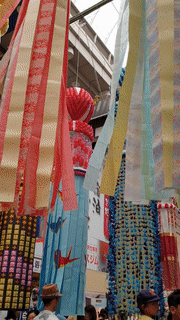
Walking through the gorgeous Sendai Tanabata decorations. (Image credit: JR East / Carissa Loh)
Star Festivals are held all over Japan, but no Star Festival shines brighter than the Sendai Tanabata Festival (仙台七夕祭り), which is held annually from 6–8 August in Sendai City (仙台市 Sendai-shi). The highlight of this festival is definitely the colourful handmade paper decorations, especially the fukinagashi (吹き流し) streamers, which adorn a 1.7km path in the city’s main shopping district. These gorgeous decorations embody the heartfelt wishes of the local community, and are a real visual delight that draws millions of visitors each year.
You can read this article for a more in-depth, personal experience at the Sendai Tanabata Festival.
Sendai Tanabata Hanabi Matsuri
.jpg)
Sendai Tanabata Hanabi Matsuri is held on 5 August, the night before the Sendai Tanabata Festival begins. (Image credit: City of Sendai)
On 5 August, the night before the Sendai Tanabata Festival begins, a magnificent fireworks display is held along the banks of the Hirose River, where 16,000 fireworks are set off to kick off the festivities. It is rare that a fireworks event is held in an urban setting, and the Sendai Tanabata Hanabi Matsuri (仙台七夕花火祭) is Miyagi Prefecture’s most-viewed fireworks display, beloved by locals and tourists alike.
Yamagata Prefecture
Yamagata Hanagasa Festival

The Yamagata Hanagasa Festival is characterised by its special hats. (Image credit: 山形県花笠協議会)
Let’s head over to Yamagata Prefecture and check out its famed Yamagata Hanagasa Festival (山形花笠祭り), which is held from 5–7 August. This summer festival is characterised by hanagasa (花笠)—beautiful straw hats decorated with artificial safflowers (紅花 benibana), the prefectural flower of Yamagata.

Hanagasa dance by children. (Image credit: JR East / Carissa Loh)
The Yamagata Hanagasa Festival sees Yamagata City (山形市 Yamagata-shi) come alive when up to 10,000 dancers parade through the streets holding hanagasa while dancing to the tune of Hanagasa Ondo (花笠音頭), a traditional song representative of Yamagata. The song is accompanied with energetic chants of “Yassho, makkasho!” and powerful beats of taiko drums. Like the Morioka Sansa Odori, there is also a segment where the crowd can join in for the fun dance.
You can read this article for a more in-depth, personal experience at the Yamagata Hanagasa Festival.
Fukushima Prefecture
Fukushima Waraji Festival

The Fukushima Waraji Festival centres around a giant straw sandal. (Image credit: 東北観光推進機構)
In Fukushima Prefecture, they have a unique summer festival that revolves around waraji (わらじ)—straw sandals. Held on the first Friday to Sunday in August, the Fukushima Waraji Festival (福島わらじまつり) sees locals parading Japan’s largest straw sandal—which has a length of 12m and a weight of 2 tons—through the streets of Fukushima City (福島市 Fukushima-shi).

Spectators try to touch the straw sandal for blessings. (Image credit: 東北観光推進機構)
The Fukushima Waraji Festival was derived from the Akatsuki-mairi procession, which has been held for over 400 years to pray for healthy legs. Did you know? The giant straw sandals that feature during the Akatsuki-mairi and the Fukushima Waraji Festival make up a pair.
During the Fukushima Waraji Festival, spectators try to touch the straw sandal, as it is believed that doing so will bless them with healthy legs. While the giant straw sandal is paraded through the streets, a procession of musicians playing flutes and drums follow, with dancers and energetic cheers of “Wasshoi! Wasshoi!”
Niigata Prefecture
Nagaoka Fireworks Festival

Vesuvius Super Grand Starmine fireworks (Image credit: JR East / Carissa Loh)
Ask any Japanese person what they think represents summer, and one of their answers will surely be hanabi (花火 fireworks). I can’t believe it took me so long, but I finally had my first fireworks festival experience in 2019, at the Nagaoka Fireworks Festival (長岡花火大会). Hundreds of spectacular fireworks festivals and displays are held all over Japan during summer weekends, but many people consider the most beautiful and outstanding to be the Nagaoka Fireworks Festival which is held on 2–3 August in Nagaoka City (長岡市 Nagaoka-shi).

Phoenix Fireworks segment. (Image credits: JR East / Carissa Loh)
Not just another festival, this annual spectacular was started as a memorial for the August 1945 bombing of Nagaoka during World War II, which killed 1,500 people and destroyed 65–80% of the city. Other than commemorating the dead, the festival also gives thanks for the city’s rebuilding, and prays for everlasting peace. To many people, the Nagaoka Fireworks Festival embodies gratitude, and hope for the future.
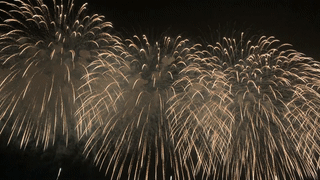
Finale of the festival, Kome Hyappyo. (Image credit: JR East / Carissa Loh)
As one of the “Three Great Fireworks Festivals of Japan”, the Nagaoka Fireworks Festival will enthral you with its large-scale, spectacular fireworks displays that light up the night sky over the Shinano River. Don’t miss the "Phoenix Fireworks" and "Kome Hyappyo", the touching finale!
You can read this article for an in-depth, personal experience at the Nagaoka Fireworks Festival.
Nagano Prefecture
Lake Suwa Fireworks Festival
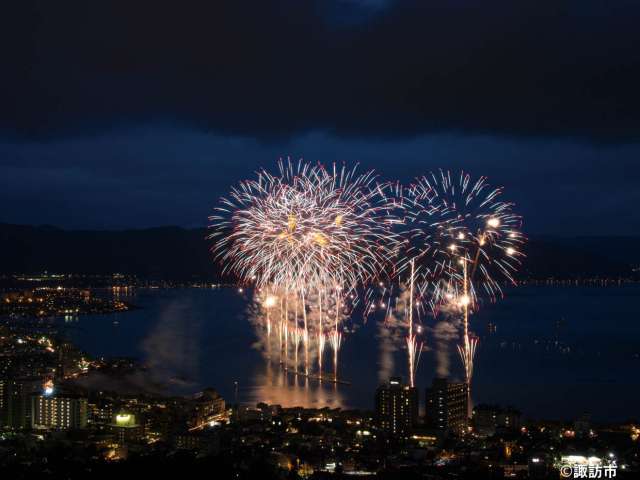
A whopping 40,000 fireworks are set off over Lake Suwa. (Image credit: 諏訪市)
Finally, over at Lake Suwa (諏訪湖 Suwa-ko), Nagano Prefecture’s largest lake, the dazzling Lake Suwa Fireworks Festival (諏訪湖祭湖上花火大会) is held annually on 15 August. This magnificent fireworks display is the largest in Japan, with approximately a whopping 40,000 fireworks set off over the lake. Be sure to stay for the grand finale: the massive Niagara-style fireworks that features 2km of cascading sparkles.

Feel the reverberations for a 4D experience. (Image credit: Nagano Prefecture / JNTO)
Given the unique location, you can enjoy beautiful reflections of this festival’s colourful fireworks on the surface of Lake Suwa. In addition, Nagano is a mountainous prefecture, and due to the lake being surrounded by mountains, you can feel strong reverberations from the fireworks being set off, which create an amazing "4D" experience!
If you cannot make it on 15 August, shorter 15-minute fireworks shows are also held every night for about a month in summer, so you can get a small preview of the sights and sounds. The Lake Suwa Fireworks Festival is a festival that I have been wanting to experience for a long time, but have not been able to yet. I did get a glimpse in summer 2019, and if that tiny 15-minute preview is something to go by, the actual festival seems like it would be amazing. I kid you not, the "4D" experience will blow your mind!
Getting around
If you are thinking of visiting some of these amazing festivals in summer, check out the JR EAST PASS (Tohoku area) and JR EAST PASS (Nagano, Niigata area), which can save you a lot on rail travel. If you are up for it, you can visit multiple festivals in one trip. I visited six of these festivals over 5 days in 2019, so I can attest that it's totally possible. But if six sounds too much, you can do like many Japanese domestic tourists do, and visit 2–3 festivals over a 3-day period.
JR EAST PASS (Tohoku area)

The JR EAST PASS (Tohoku area) and usage area. (Image credit: JR East)
If you are visiting the Tohoku Region, check out the JR EAST PASS (Tohoku area), an affordable pass offering unlimited rail travel on JR East lines (including bullet trains) in the valid area for 5 consecutive days at only ¥30,000. You can also make seat reservations for bullet trains, some limited express trains and Joyful Trains online for free, up to 1 month in advance, on the JR-EAST Train Reservation.
The JR EAST PASS (Tohoku area) can be used for automatic ticket gates, and foreign passport holders living in Japan are also eligible to use this pass.
JR EAST PASS (Nagano, Niigata area)
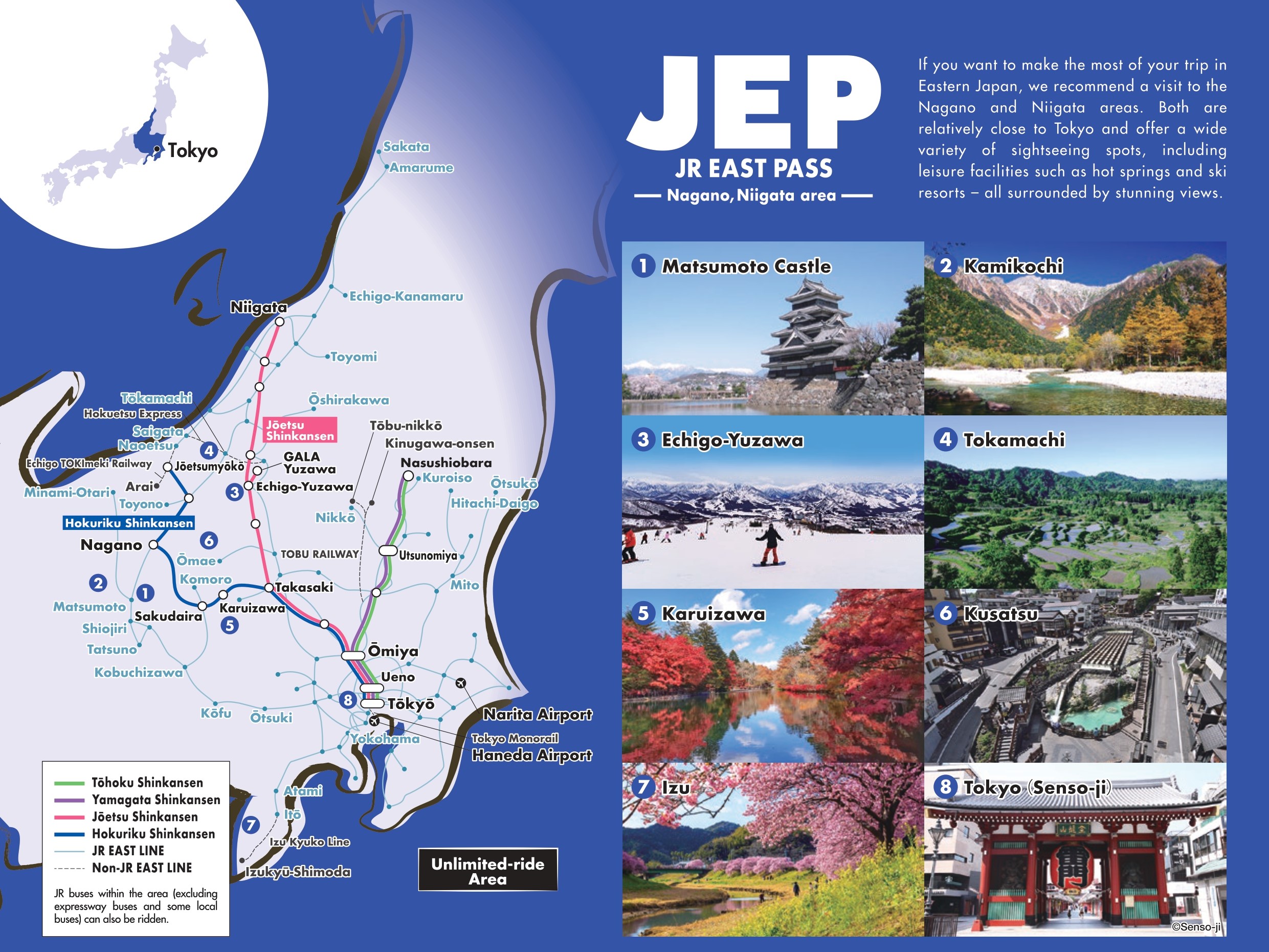
The JR EAST PASS (Nagano, Niigata Area) and usage area. (Image credit: JR East)
If you are thinking of visiting the Nagaoka Fireworks Festival or the Lake Suwa Fireworks Festival, check out the JR EAST PASS (Nagano, Niigata area), an affordable pass offering unlimited rail travel on JR East lines (including bullet trains) in the area for 5 consecutive days at only ¥27,000. You can also make seat reservations for bullet trains, some limited express trains and Joyful Trains online for free, up to 1 month in advance, on the JR-EAST Train Reservation.

The JR-EAST Train Reservation. (Image credit: JR East)
The JR EAST PASS (Nagano, Niigata area) can be used for automatic ticket gates, and foreign passport holders living in Japan are also eligible to use this pass.
Header image credit: photoAC




